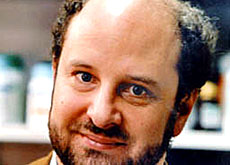BSE almost eradicated in Switzerland

For the second year in a row just three cases of BSE, or mad cow disease, were diagnosed in Switzerland in 2005. The disease appears to be close to eradication.
Switzerland has been cited as a good role model in the fight against Bovine Spongiform Encephalopathy and Swiss expertise has been deployed abroad.
The latest figures confirm the steady fall in the numbers of new BSE cases in the national herd since 2001.
Marcel Falk of the Federal Veterinary Office told swissinfo that it was now possible to “see the beginning of the end of BSE in Switzerland”.
He said the fact that the number of cases had remained stable in 2005 confirmed that the drop seen in 2004 – from 21 to just three – was more than merely a statistical blip.
Falk said it was impossible to say when BSE might finally disappear from Switzerland, given that the incubation period for the disease was at least five years, and could be as long as ten to 12 years.
But he said the three cows diagnosed with the disease this year were likely to have contracted it several years ago.
“One knows from experiments that all cows [which contract the disease] are infected in the first year of life. The cows diagnosed in 2005 were all between seven and ten years old, which means they contracted the disease in the mid-1990s.”
Controlling the disease
In 1990 Switzerland became the third European country after Britain and Ireland to register cases of BSE in its cattle. BSE was first defined in Britain in November 1986. Some 83,000 cases have been detected there since then.
The human disease, Variant Creutzfeldt-Jakob Disease (vCJD), was recognised in 1996 and is thought to result from the consumption of BSE-infected meat. There have been no cases of vCJD reported in Switzerland.
Last year, the United Nations praised Switzerland for its efforts to control mad cow disease, calling it a model for other nations.
Various measures aimed at controlling the disease have been introduced in Switzerland, including a complete ban on animal products in feed for livestock in 2001.
Andrew Speedy of the UN’s Food and Agriculture Organization said testing was begun as soon as BSE was found in Swiss cattle.
“The control measures which we recommended – the ban on meat and bonemeal and the destruction of specified risk materials – were done right from the word go,” Speedy said.
In 2004, Switzerland sent BSE experts to the United States, following that country’s first confirmed case of BSE.
swissinfo with agencies
The EU countries with the most BSE cases in 2005:
Britain: 151
Spain: 75
Ireland: 68
Portugal: 37
Germany: 31
France: 29
In comparison:
Italy: 8
Austria: 3
(Switzerland: 3)
The first case of Bovine Spongiform Encephalopathy (BSE), or mad cow disease, was reported in Britain in 1986.
Switzerland became the third European country affected by the disease, which progressively destroys the brain and nervous system.
Switzerland quickly adopted measures to limit the spread of BSE: a complete ban on animal products in feed for livestock; the elimination of the herd where cases of BSE were confirmed, and the incineration of the carcasses of sick animals.
The human form of BSE, new Variant Creutzfeldt-Jakob disease (vCJD) was discovered in 1996.

In compliance with the JTI standards
More: SWI swissinfo.ch certified by the Journalism Trust Initiative












You can find an overview of ongoing debates with our journalists here . Please join us!
If you want to start a conversation about a topic raised in this article or want to report factual errors, email us at english@swissinfo.ch.